Photo Column
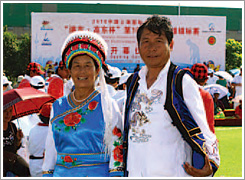

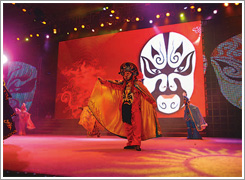
How did Japanese teams other than TKE do?
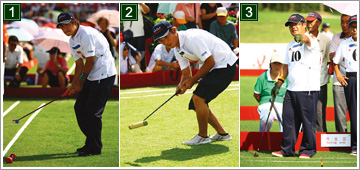
Although 15 teams from Japan entered the championships, the only five that made it beyond the qualifying league stage were TKE, Komatsushima, Friend Sports, Osaka Midori, and Shizuoka, and even these were all knocked out by Chinese opposition by the quarter finals. This can be partly explained by an atmosphere in which it was difficult to keep calm, due to the absolute determination of the Chinese teams to win, the fervent support from the surrounding home crowd, and scorching temperatures of up to 33 degrees.
- Komatsushima (Tokushima) A team of veterans with a record that includes holding both middle-class titles of the National Invitational Tournament at the same time and winning the All-Japan Cross-Generation Championships. Entered Round 2 as seeds where they were defeated by eventual quarter-finalists Tianjin.
- Friend Sports (Kagoshima)Viewed as leading contenders this time having won a Grand Slam of national titles last year and the Asian Championships twice in a row, they were narrowly defeated in Round 1 by eventual third-place finishers ZHENGER PRIMARY SCHOOL.
- Osaka MidoriPowerful reigning champions and winners of the 19th Japan National Championships in 2003. Beaten in Round 1 by eventual runners-up YUNNAN LIMING. “Chinese touch power is scary. We just can't match them”, admitted captain Akihiro Shimada (photo).
Seeking the Reason for Chinese Teams' Strength!
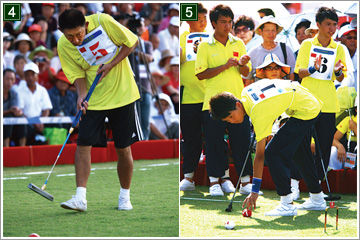
The reason for China's sudden leap from no successes in these Championships to victory this time is the full-scale efforts of the China Gateball Association to develop gateball skills. At the 6th World Games held in Japan in 2001, the Chinese team, which included members of the champions this time, FUJIAN, were not used to the natural grass courts and struggled on their way to defeat by the Japanese team (Kurodasho), eventually finishing third. China has worked hard since then to install grass courts at home and, under the slogan “Start playing gateball from childhood”, it has built strong foundations for the sport, for example introducing an annual national junior competition. Evidence of the success of these efforts can now be seen in the 5 million Chinese people said to play gateball.
- ZHENGER PRIMARY SCHOOL who won third place despite being a junior team. The hitter is Liang Jie Wen (14).
- FUJIAN, defeated by Japan at the 6th World Games, gained revenge in style this time. The hitter is Zhang Wei (57).
Debuts for Indonesia and the Philippines
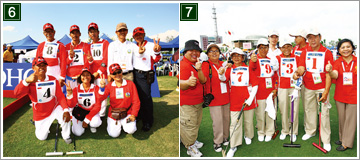
Indonesia reached the quarter-finals of the 2nd Asian Championships in 1996 but were competing in these World Gateball Championships for the first time, entering two teams. The two Philippine teams were making their international competition debut this time.
- INDONESIAPartisan Gateball Bali photographed here are a powerful team of players mostly in their 40s and 50s from Denpasar, Bali and include players who reached the quarter-finals of the 2nd Asian Championships.
- PHILIPPINESPhilippines Team A is a team composed of players in their 60s and 70s from Manila and Japanese players who have retired and moved to the Philippines.

